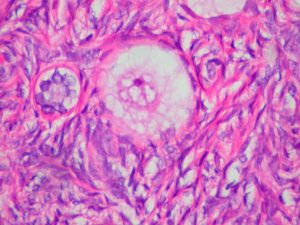A germline is the ancestry of one generation of cells to the next ones. But, scientists for a long time did not know how this has not been destroyed. Over time cell’s proteins become deformed and clump together, and this damage gets passed down to the next generation. So, in theory the germline should have already been destroyed, but it is still producing new and healthy life to this day. The question is: how?
Scientists have recently found the answer to this through studying a tiny worm called Caenorhabditis elegans. Similar to humans, these worms rely on certain genes to control their cellular division. In fact, they have a gene called daf-2 which has the ability to more than double their lifespan. After seeing this gene, scientists have realized that there are genes that are involved in repairing cells so that they do not become deformed or clumped.
Caenorhabditis elegans are hermaphrodites where once eggs are mature they travel to the sperm. But, the eggs have a lot of damaged proteins, only not the ones near the sperm. This led scientists to hypothesize that the sperm send out a signal to tell the egg to get rid of its damaged proteins. This signal triggers the lysosomes in the egg cells to become acidic and break down the clumps.
Even though this discovery was found on worms it could have seriously beneficial implications for humans. Stem cells also use lysosomes to get rid of damaged proteins. So this discovery could lead into learning how to treat diseases, such as Alzheimer’s Disease, to clean their aging tissue. A discovery found by studying tiny worms could lead to the answer to how to cure diseases that come with old age.


Leave a Reply